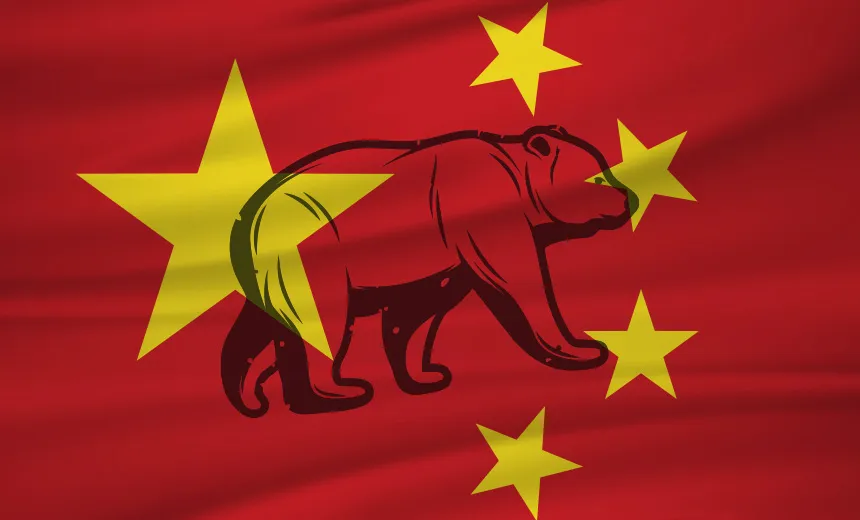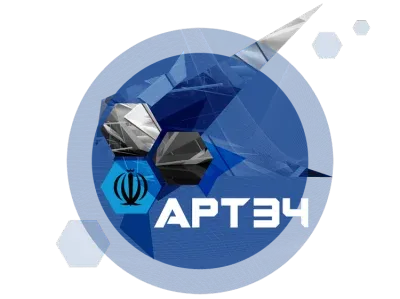World of APT Groups: Nation-State Threat Actors and Their Operations
Have you ever wondered what lurks beneath the surface of the digital world? Imagine cyber adversaries so sophisticated that they’re less like smash-and-grab thieves and more like master strategists, carefully orchestrating complex digital campaigns that can span years.
Meet the most elite warriors of the cyber landscape—Advanced Persistent Threats (APTs). These aren’t your average hackers. They’re highly organized, meticulously planned digital operations backed by some of the most powerful entities on the global stage.
Who Stands Behind These Digital Shadows?
APTs aren’t lone wolves. They’re strategic teams with profound backing:
- Nation-state intelligence agencies
- Government-sponsored cybersecurity units
- Well-funded hacktivist collectives
Picture them as the special forces of the cyber world—each operation is a carefully crafted mission with specific, high-stakes objectives.
The APT Approach: Patience as a Weapon
Unlike traditional cybercriminals who seek quick wins, APTs play an entirely different game. Their strategy? Infiltration through stealth and persistence.
Imagine a Digital Chess Match
- They don’t just break into systems; they inhabit them
- Months or even years might pass between initial infiltration and actual strike
- Every move is calculated, every action purposeful
What Do They Really Want?
Their targets are far more strategic than simple data theft:
- Critical infrastructure vulnerabilities
- Cutting-edge intellectual property
- Financial system weak points
- Geopolitical intelligence gathering
In this blog, we will explore:
- APT Naming Conventions adopted by leading cybersecurity firms.
- Country-Specific APT Groups and their tactics, techniques, and procedures (TTPs).
- Notorious Cyberattacks orchestrated by APTs worldwide.
Prepare to dive deep into the murky waters of cyber adversaries, their motives, and the attacks that have left governments and organizations reeling.
APT Naming Conventions: The Logic Behind the Chaos
Different cybersecurity intelligence companies have developed unique systems to identify and categorize APT groups. These naming conventions offer insights into their origins, affiliations, or attack methods.
| Company | Naming Convention | Examples |
|---|---|---|
| Mandiant (FireEye) | APT + Number (based on discovery order) | APT1, APT28, APT29 |
| CrowdStrike | Animal-themed names linked to regions | Fancy Bear (Russia), Deep Panda (China) |
| Microsoft | Chemical elements (Periodic Table terms) Former Natural Calamities Storm, Blizzard, Typhoon | Strontium (Russia), Hafnium (China) |
| Kaspersky | Culturally descriptive or campaign-based | Equation Group, DarkHotel, Winnti Group |
| Symantec | Operation-themed names | Elderwood, Dragonfly, Buckeye |
| Palo Alto Networks | Threat Group (TG) + Number | TG-3390, TG-641 |
| Secureworks | G-Number (Geopolitical regions or goals) | G-0010 (Russia), G-0092 (China) |
| ESET | Campaign- or tool-based names | TeleBots (Ukraine), Industroyer |
| Trend Micro | Campaign-tied or regional names | Pawn Storm, Earth Lusca |
| Group-IB | Threat Actor (TA) + Identifiers | TA505, TA542 |
| Bitdefender | Operation- or malware-specific | Netrepser, Pacifier APT |
| MalwareBytes | Region- or method-specific names | LazyScripter, Operation Sharpshooter |
| Talos (Cisco) | Descriptive names (tools/campaigns) | BlackTech, Sea Turtle |
These naming systems help identify threat groups, their origin, and operational styles. For instance:
- CrowdStrike’s Bears indicate Russian actors.
- Microsoft’s Strontium links to Russian state-backed threats.
APT Groups by Country: Masters of Cyber Warfare
APT groups often operate as nation-state tools to serve geopolitical, economic, or military objectives. Below, we categorize major APT groups by their country of origin, detailing their TTPs (Tactics, Techniques, and Procedures), active years, and identifying firms.
China: Masters of Espionage and Supply Chain Compromises
Chinese APT groups focus on industrial espionage, intellectual property theft, and strategic cyber operations.
| APT Group | TTPs | Active Since | Identified By |
|---|---|---|---|
| APT1 (Comment Crew) | Spear-phishing, custom malware (GETMAIL, MAPIGET) | 2006 | Mandiant (FireEye) |
| APT41 (Double Dragon) | Supply chain attacks, dual-purpose espionage | 2012 | FireEye |
| APT10 (Stone Panda) | Cloud service targeting, web shells, lateral movement | 2009 | PwC and BAE Systems |
| Deep Panda | PlugX RAT, credential theft, fileless malware | 2013 | CrowdStrike |
| Winnti Group | Gaming industry targeting, keylogging | 2009 | Kaspersky |
| Hafnium | Exploiting Microsoft Exchange vulnerabilities | 2020 | Microsoft |

Famous Attacks
| APT Group | Attack Name | Description | Year |
|---|---|---|---|
| APT1 | Operation Shady RAT | Intellectual property theft from 70+ organizations | 2006-2010 |
| APT41 | CCleaner Supply Chain Attack | Compromised software delivering malware globally | 2017 |
| Hafnium | Microsoft Exchange Hack | Exploited zero-day flaws in Exchange servers | 2021 |
Russia: Cyber Sabotage and Political Disruption
Russian APTs excel at election interference, ransomware attacks, and sabotaging critical infrastructure.
| APT Group | TTPs | Active Since | Identified By |
|---|---|---|---|
| APT28 (Fancy Bear) | Exploiting zero-days, phishing campaigns | 2004 | FireEye |
| APT29 (Cozy Bear) | Stealthy malware, PowerShell attacks | 2008 | CrowdStrike, Mandiant |
| Sandworm | ICS attacks, ransomware, spear-phishing | 2009 | ESET, Symantec |
| Turla (Snake) | Watering hole attacks, RAT deployments | 2006 | Kaspersky |
| Gamaredon Group | Phishing campaigns, lateral movement | 2013 | Symantec, Palo Alto |

Famous Attacks
| APT Group | Attack Name | Description | Year |
|---|---|---|---|
| APT28 | DNC Email Breach | Stole and leaked U.S. election-related emails | 2016 |
| Sandworm | NotPetya Ransomware | Destructive malware targeting Ukraine, spread globally | 2017 |
| APT29 | SolarWinds Supply Chain Attack | Compromised government agencies and enterprises | 2020 |
North Korea: Financial Heists and Espionage
North Korea’s APT groups combine cybercrime and espionage to fund state activities.
| APT Group | TTPs | Active Since | Identified By |
|---|---|---|---|
| Lazarus Group | Cryptocurrency theft, ransomware (WannaCry), spear-phishing, supply chain attacks. | 2007 | Kaspersky, Symantec |
| APT37 (Reaper) | Exploiting vulnerabilities, mobile malware, spyware, and information theft. | 2012 | FireEye |
| Kimsuky | Targeting think tanks, spear-phishing, spyware (BabyShark), credential harvesting. | 2013 | Recorded Future |
| APT38 (BlueNoroff) | Financial theft, SWIFT payment system targeting, malware deployment. | 2014 | FireEye, Mandiant |
| Stardust Chollima | Information theft, espionage, watering hole attacks, zero-day exploits. | 2015 | CrowdStrike |
| Andariel | Focus on South Korean entities, ransomware, cryptocurrency mining, credential theft. | 2015 | Kaspersky |

Lazarus Group
Famous Attacks
| APT Group | Attack Name | Description | Year |
|---|---|---|---|
| Lazarus Group | Sony Pictures Hack | Destroyed Sony’s data and leaked confidential information after “The Interview” movie controversy. | 2014 |
| APT37 (Reaper) | Destover Wiper Attacks | Conducted destructive wiper attacks on South Korean targets. | 2013 |
| Kimsuky | BabyShark Campaign | Conducted espionage against think tanks and research organizations in South Korea and the U.S. | 2018 |
| APT38 (BlueNoroff) | Bangladesh Bank Heist | Stole $81 million from Bangladesh Bank via the SWIFT payment system. | 2016 |
| Andariel | South Korea Cryptocurrency Thefts | Targeted South Korean exchanges to steal cryptocurrency using sophisticated malware. | 2017–Present |
Iran: Cyber Disruption and Espionage
Iranian APT groups excel at disruptive cyberattacks and regional espionage.
| APT Group | TTPs | Active Since | Identified By |
|---|---|---|---|
| APT33 (Elfin) | Spear-phishing, destructive malware (Shamoon), targeting aerospace and energy sectors. | 2013 | FireEye, Symantec |
| APT34 (OilRig) | Credential harvesting, DNS tunneling, spear-phishing, web shells (TwoFace). | 2014 | Palo Alto Networks, Mandiant |
| Charming Kitten | Social engineering, credential stuffing, spyware, phishing campaigns. | 2011 | ClearSky, Recorded Future |
| Rocket Kitten | Credential theft, social media impersonation, malware delivery via phishing. | 2014 | Check Point |
| Cobalt Mirage | Ransomware attacks, web shell usage, and infrastructure exploitation. | 2020 | Secureworks |
| MuddyWater | PowerShell and VBA macros, spear-phishing, C2 via DNS tunneling. | 2017 | Microsoft, Symantec |

APT34 (OilRig)
Famous Attacks
| APT Group | Attack Name | Description | Year |
|---|---|---|---|
| APT33 (Elfin) | Shamoon Wiper Attacks | Deployed destructive malware against Saudi Aramco, wiping 35,000 computers. | 2012, 2016 |
| APT34 (OilRig) | DNS Tunneling Campaigns | Used DNS tunneling for covert data exfiltration in Middle East organizations. | 2017 |
| Charming Kitten | Credential Theft from U.S. Officials | Phishing campaigns targeting journalists and government officials. | 2018 |
| Rocket Kitten | Operation Woolen-Goldfish | Espionage campaign targeting political and defense sectors in the Middle East. | 2015 |
| Cobalt Mirage | Ransomware Attacks on U.S. Organizations | Conducted ransomware operations with overlapping espionage goals. | 2020 |
India: Emerging Cyber Players
India’s APTs focus on regional espionage and cyber-operations against neighboring adversaries.
| APT Group | TTPs | Active Since | Identified By |
|---|---|---|---|
| SideWinder | Phishing campaigns, custom malware (WarHawk), targeting neighboring countries’ militaries. | 2012 | Group-IB, Kaspersky |
| Transparent Tribe | Malware (Crimson RAT), phishing campaigns, targeting government and military. | 2013 | Cisco Talos |
| Operation Hangover | Keylogging, credential harvesting, targeting Pakistan and China. | 2010 | Norman Shark |
| APT-C-35 (Donot) | Mobile espionage apps, spear-phishing, information theft. | 2016 | Amnesty International |
| Dropping Elephant | Watering hole attacks, document-based malware, political and military targets. | 2015 | ESET |
| DarkHotel (Active in India) | Spear-phishing, Wi-Fi hotspot attacks, targeting diplomats and business executives. | 2007 | Kaspersky, Bitdefender |

Famous Attacks
| APT Group | Famous Attack | Description | Year |
|---|---|---|---|
| SideWinder | Targeting South Asian Militaries | Conducted espionage against military organizations in Pakistan and China. | 2012–Present |
| Transparent Tribe | Operation C-Major | Delivered Crimson RAT malware to espionage targets in government and education sectors. | 2013–Present |
| Operation Hangover | Espionage on Pakistani and Chinese Entities | Gathered intelligence using keyloggers and RATs. | 2010–2013 |
| APT-C-35 (Donot) | Mobile Espionage Campaign | Delivered Android spyware targeting diplomats in South Asia. | 2016–Present |
| Dropping Elephant | Document-Based Malware Attacks | Targeted political and military entities in Asia using malicious documents. | 2015 |
Conclusion
APT groups are not rogue hackers; they are nation-state-backed cyber weapons wielding immense power. These adversaries will continue to evolve, leveraging new technologies like AI, quantum computing, and automation to stay ahead.
Organizations must adopt robust cybersecurity frameworks, leverage real-time threat intelligence, and foster global collaboration to defend against these highly persistent and capable adversaries.
In this digital battlefield, staying informed is the first step toward staying secure.
Stay vigilant. Stay secure.